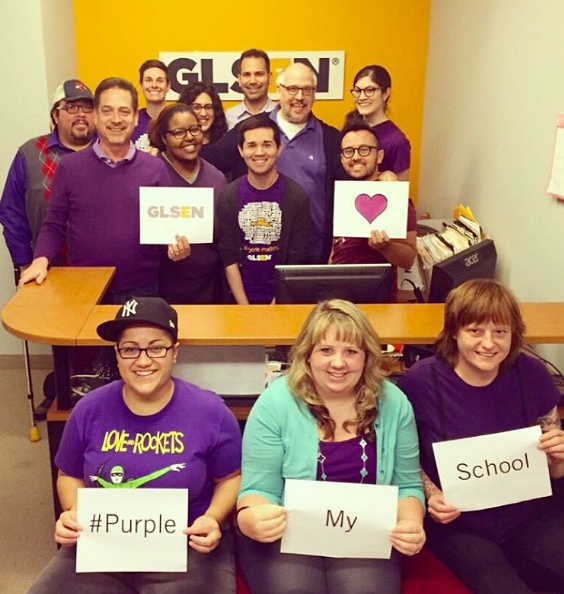3 Reasons Why GLSEN Went Purple
Yesterday marked the end of the #PurpleMySchool campaign, an effort by UNESCO, UNDP, and Being LGBTI in Asia to end bullying on the basis of sexual orientation and gender identity in schools across Asia-Pacific. Supporters took part in the campaign by taking a stand against bullying through public displays of purple.

Recently, GLSEN went purple and joined in on the campaign. Here are three reasons why:
1. Because education is a human right.
The #PurpleMySchool campaign ended on International Human Rights Day, recognized every year on December 10 since 1948, when the United Nations General Assembly adopted the Universal Declaration of Human Rights, a document that set out fundamental rights to be universally protected. Among those rights is the right to an education, and bullying infringes upon that right. GLSEN went purple to reassert that youth in Asia-Pacific have the right to an education free of harassment.
2. Because school climates need to change—not just in the U.S.
GLSEN’s most recent National School Climate Survey shows that for many LGBT youth in the United States, school remains a hostile place. Similarly, UNESCO Bangkok released From Insult to Inclusion, a report that shows that school climate in the Asia-Pacific region is hostile for many LGBTI youth. In some countries in the region, as many as four out of five LGBTI students are affected by some form of violence or bullying. GLSEN went purple to amplify the voices of these youth.
3. Because there is power in unity.
By going purple, GLSEN stood in solidarity with our LGBTI friends in Asia-Pacific. We can best effect change when we work together as allies.
Although the campaign is over, the issues persist. School climates remain overwhelmingly hostile for many youth, but students, educators, and allies in any nation can learn more about school climate for LGBTI youth in Asia-Pacific and demand that change be made.
